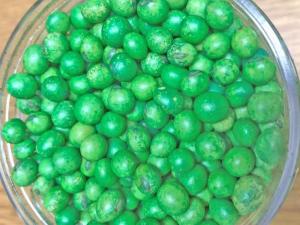March 4, 2020

Following wet weather conditions and fallow fields, some producers are wondering if they need to inoculate their soybean seed with Rhizobia.
Soybean plants have a symbiotic relationship with bacteria in which the bacteria fix nitrogen from the atmosphere into a plant-available form of nitrogen. In soybean, nitrogen fixation is associated with Bradyrhizobium japonicum (commonly referred to as just Rhizobia). Generally, fields with a history of soybean production have an adequate population density of Bradyrhizobium japonicum. In our research trials, we have measured a yield increase of approximately 1.5 to 2.0 bu/acre when soybean seed is inoculated and the field has a history of soybean production. However, statistically, this is only at the 70% confidence level (e.g., I’m 70% confident there is a 1.5 to 2.0 bu/acre yield increase when soybean seed is inoculated when the field has a history of soybean production.)
What about fields that were flooded?
In Wisconsin, researchers examined Rhizobia populations and effect of inoculant following flooded field conditions the previous year. Trials were conducted in three field locations that were flooded for at least three weeks. Soybean yield was not influenced by inoculant (four inoculant products tested). Even following a flood, Rhizobia populations were adequate for crop growth. However, if large amounts of soil or plant residue from an unknown origin were deposited in the field, Rhizobia inoculation may be necessary.
What about fields that were never planted?
When fields remain unplanted, there may be a decline in beneficial mycorrhizal fungi, which is commonly referred to as “fallow field syndrome.” Keep in mind Bradyrhizobium japonicum are bacteria, not fungi. There is very limited information on the effect of fallow fields on Rhizobia populations. However, if soybean were planted sometime during the past three years, there should be an adequate Rhizobia population.
If you are concerned about having adequate Rhizobia populations in your fields, inoculant is a relatively cheap insurance.
Source: Ohio State University
The source is solely responsible for the information provided and is wholly owned by the source. Informa Business Media and all its subsidiaries are not responsible for any of the content contained in this information asset.
You May Also Like




